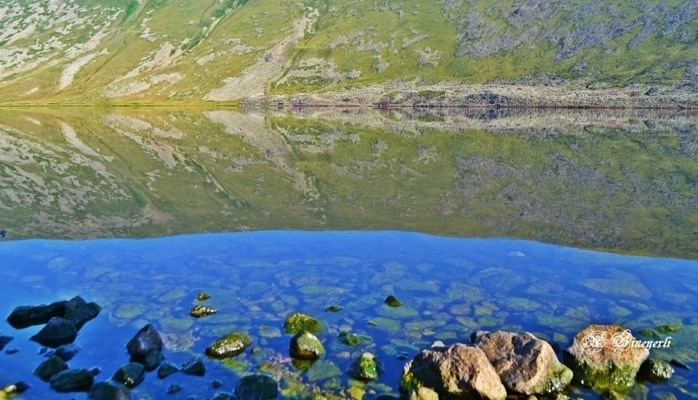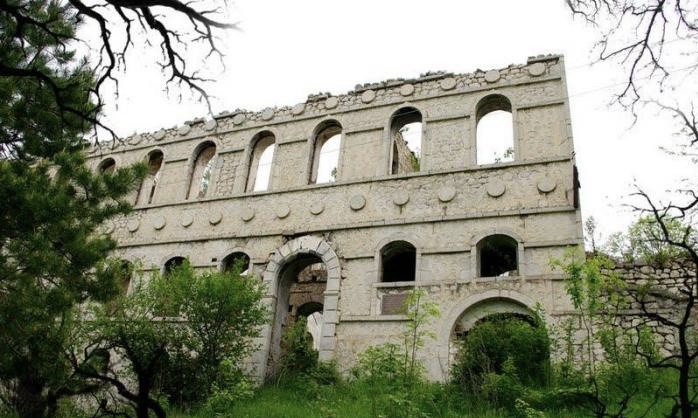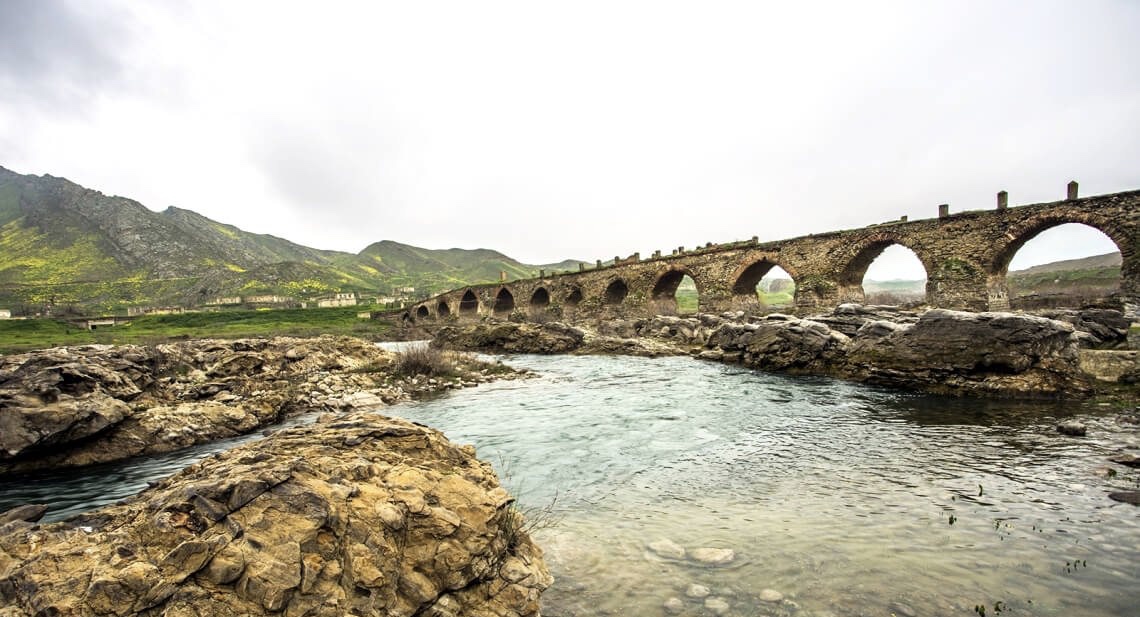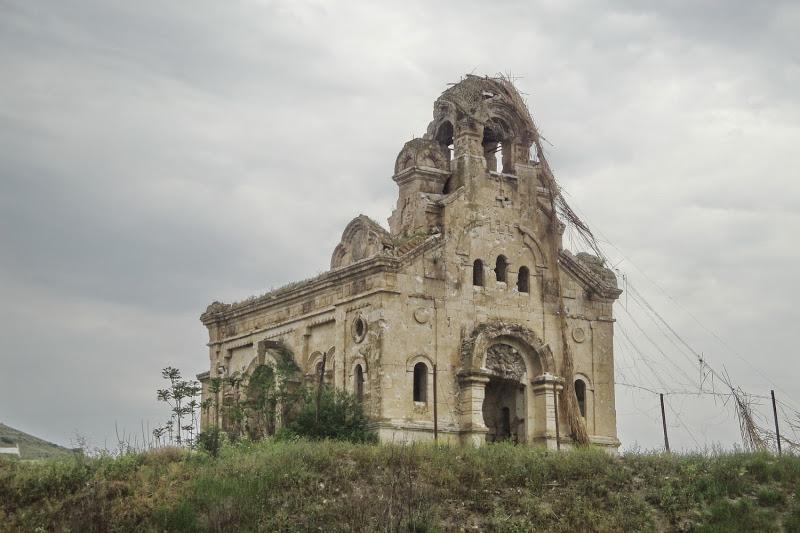






of







of







of





















Aghoghlan Temple is set in two acres of land at the 30th kilometer of Lachin-Minkend highway, on the right bank of the river Hekeri, near Kosalar village of Lachin district. Aghoghlan Temple is Albanian monastery built in the 5th-6th centuries. As the monument was exposed to avalanches and destructions at different times, it was rebuilt in the style of church and adapted to monastery. The first foundation of the monument was preserved in its initial form during repairs; the new walls were built over the old ones. After restoration, Aghoghlan Temple had become one of the most spectacular monuments of the Albanian period architecture of the Azerbaijani history. The temple is 25 meters long and 12.5 meters wide. Two rows of the square-shaped eight bearing piles – pylons divided the inner side of the building into three parts.
The monument was under occupation since May 18, 1992. Armenians made illegal changes in architectural style and the interior of Aghoghlan monastery, completely wiped out the inscriptions on the walls of the monument, as well as a large number of ornaments and symbols reflecting the Albanian period or greatly changed them. In 2006, under the pretext of repairing the monument for the second time, the Armenians placed in different parts of the walls 26 boards with inscriptions indicating belongingness of the monument to the Armenian Apostolic Church. 2 tombstones were erected in the right side of the courtyard and 2 stone crosses made of red basalt stone from Irevan were erected in front of the entrance door by Armenians. It was renaimed as “Jijernavank” after the occupation of the Lachin district by Armenian Armed Forces in 1992.

Qaragol Interrepublics State Reserve was set up with the decision of the Council of Ministers dated November17, 1987. Garagol State …

The idea of establishing Aghdam Bread Museum, which is considered to be the second in the world after the Zurich …

The Khurshudbanu Natavan’s House is a historical and architectural monument of the 18th century located in the city of Shusha. …

Museum Mausoleum Complex of Molla Panah Vagif is located in Shusha, Azerbaijan. It was built in honor of Molla Panah …

The Bridge belongs to the Arran architecture school. The first written source that mentioned the 15-arched Khudafarin Bridge belongs to …

Garghabazar Caravanserai was built in 1681 at the hillside, in the center of Garghabazar village of Fuzuli district, 8 km …

Armenia’s vandalism in Nagorno-Karabakh and seven surrounding regions affected not only the historical, cultural, and religious heritage of Islam but …

Jabrayil History-Ethnography Museum has been operating since 1953. Archaeological and ethnographic materials belonging to the history of the region, textiles, …

Khudavang, or Dedeveng, Monastery Complex is located in the Vang village of Kalbajar District, on the left bank of Tartar …

“The 19th century Aghdam Juma Mosque is perhaps the only structure that has withstood the years of neglect since the …